Sculptor Autin Wright: Giving Birth to Ideas Inside His Head
By Ilene Dube, JerseyArts.com
originally published: 04/08/2023
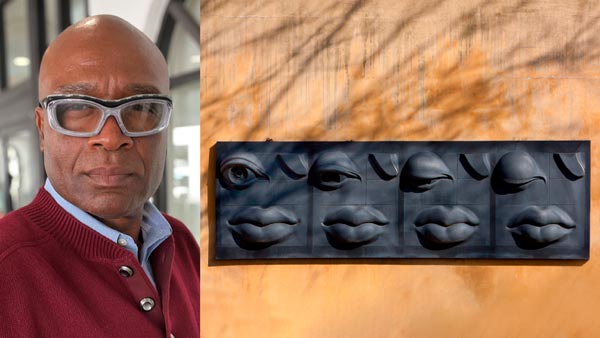
“My studio keeps getting smaller and smaller,” says Autin Wright, of the space where he makes and stores his sculpture, located on the Grounds For Sculpture campus in Hamilton.
Now that he is officially retired as the atelier’s technical supervisor for paint and patina, and devoting himself full-time to his own art – he shows up at 6 a.m. most days – the already stacked studio is piling up with even more works in stone and wood. A cast of one of his more well-known works “The Sleep” – a four-panel relief that shows a set of lips and an eye, progressing from fully awake to sleepy, sleepier and asleep – is spilling outside into the hallway.
“I don’t want to stop working,” he says of his retirement. “What could be more important than making art?”
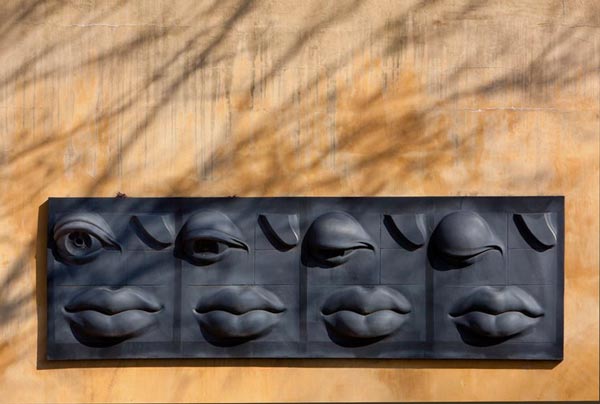
Autin Wright, The Sleep, 1996. Cast aluminum, 31” x 98” x 6” (Photo courtesy of the artist)
Wright describes himself as an introvert. “My worries are inside of me – it affects my sensitivity as an artist.” He is presently reading “Quiet: The Power of Introverts in a World That Can't Stop Talking” by Susan Cain. “Most creative people are introverts,” he says. Beginning in childhood he didn’t want to be in a group and as a result did not like being in school. “I would find myself in art class where I could focus on a subject without engaging with everyone. I don’t like conflict.
“Noise, tensions, stress – it drains you. Artists and makers are deep thinkers,” he continues. “When you look at my work you see what’s in my head, even if I can’t talk about it.”
How do the feelings inside him make their way to large-scale marble shapes? He begins with sketches. “I have sketchbooks everywhere – in my car, in my bag, on the shelf. I take sketchbooks to Starbucks.” He flips through one, filled with intricate designs and calculations for some of his recognizable works.
From the sketch he makes a small clay model. “Inside my head everything is perfect but to execute it, I have to work out the problems, creating solutions. I call it being pregnant with an idea you want to give birth to. We have no idea how it will turn out, or even if we will like it. As artists we will have a relationship to the piece we give birth to. By using clay, I can play around with it. It has to look like it belongs, like it’s here to stay. Sometimes it may be too complex, and we have to simplify it, or put it aside and come back to it, erasing lines and adding new ones until we can say ‘yes, it’s working.’”
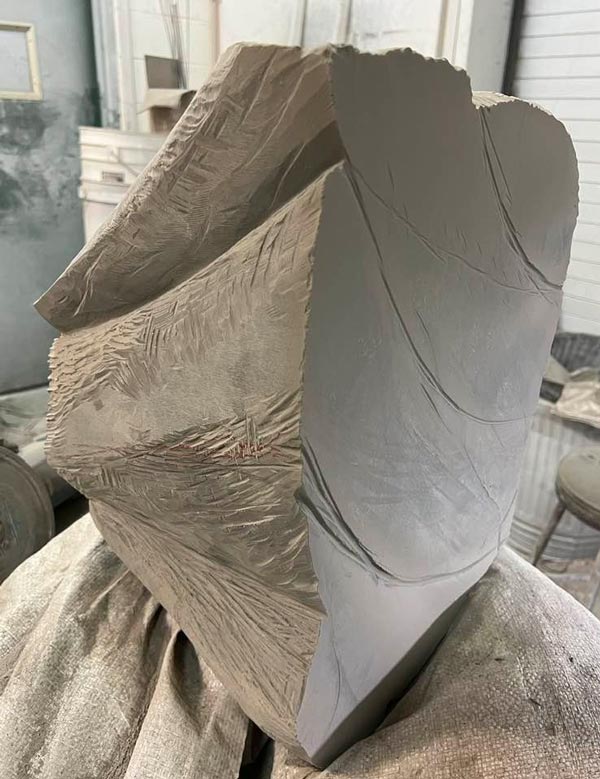
A sculpture from black marble in progress. (Photo courtesy of the artist)
In another section of the studio are the forms that the sketches and clay models have led him to, works in white marble that are so elegant and smooth, they convey something sublime. “I’m a minimalist,” he says. “Simplicity is not easy – it’s complex.”
He’s also a perfectionist. “If I feel a bump I have to get rid of it. I’m always passing my hands over it, my hands see more than my eyes.”
He shows me a set of four totemic shapes in cherry, each with a smooth side and a rough side. One has the remnant of a bullet that ricocheted off it when it was exhibited at Art All Night, the popular 24-hour event run by Artworks Trenton. In 2018, gunfire broke out at the event, resulting in 22 injuries and the death of the gunman.
“I decided not to remove that mark, because it tells a story,” says Wright, who lives in Trenton.
As he speaks, he’s massaging the wood with his hands.
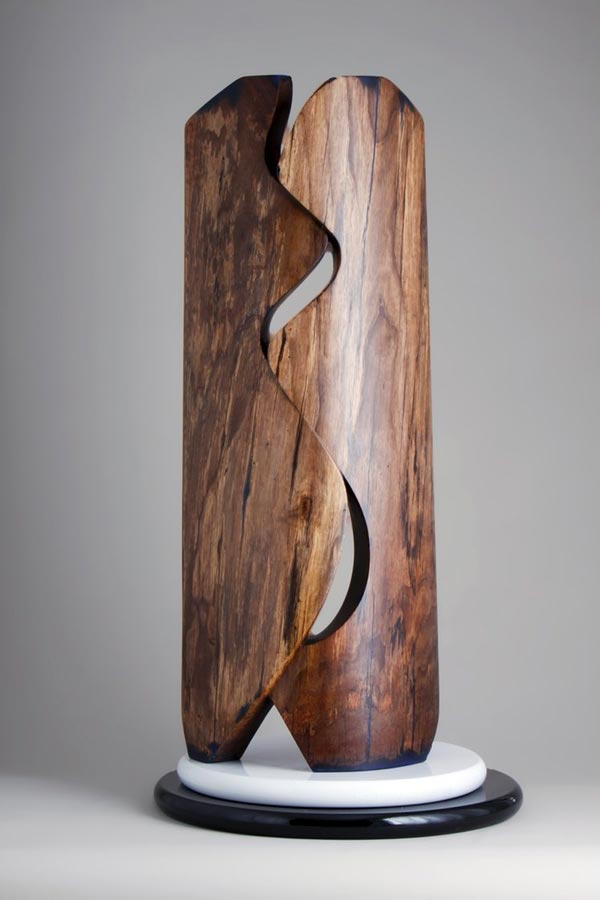
Autin Wright, Ascension, 2010. Black walnut, 35" x 18" x 18" (Photo courtesy of the artist)
He takes a call from the proprietor at Jamaican Empire in the capital city. They are making cow foot, a Jamaican specialty that is one of Wright’s favorites. He says he’ll be there after the interview. “They want to make me famous,” he says into the phone, looking at this interviewer.
“You’re already famous,” I say, with five works at Grounds For Sculpture and at the University of Penn Medicine Hospital in Plainsboro. He’s even been a model for George Segal’s life-size “Bus Shelter” sculpture at the Zimmerli Art Museum in New Brunswick, for which he had to be wrapped in gauze.
Wright modestly deflects any mention of his renown.
“Everyone is used to rice and curry and oxtail,” he says of his native cuisine, after hanging up with the restaurant. “Salted codfish is the Jamaican national dish, served with yam, banana and dumpling. But cow foot is a less popular treat.”
Wright is looking forward to an upcoming trip to Jamaica with friends, sculptor Rein Triefeldt and his wife, Laurie, a graphic artist. It’s the first time he’ll be visiting the homeland in six years, and has asked a relative to be their tour guide. “They drive on the right,” he says, and after all his years living in the U.S., that makes him anxious.
Born in 1960, he grew up in a family of makers – his mother was a dressmaker and his father an upholsterer. His brother, who grew up to be a doctor, tried to steer Autin away from art, but when he didn’t get into medical school and did get into art school, the path found him. “Everything works out,” he says. “I had amazing art teachers who encouraged me.”
After art school, he taught the subject in high school. When his family moved to Hartford, Connecticut, Wright decided to follow. “I thought I would come and connect to some galleries and go back home. I enjoyed teaching and the recognition I was getting in Jamaica – write-ups in the paper and awards.”
Wright pulls a large plastic tub from a shelf that even someone as tall as he has to stretch for. It is filled with those write-ups and award plaques and correspondence, as well as accolades for fellow sculptors. Although his work is abstract, Wright’s earlier work was figurative, such as a bust of Venezuelan military leader Simon Bolivar, for which he won a first-place competition while still a student. A yellowing article shows him as a young man standing with the bust at the awards reception.
In Hartford, which has one of the largest expatriate Jamaican populations outside the Caribbean island nation, “I felt like I was still in Jamaica. There were so many Jamaican accents.”
His concept of America clashed with what he saw. “You don’t think of potholes and rats, you think picket fences and nice families. I didn’t know there were so many African Americans in America. The TV characters I had seen were all white. Except for Bill Cosby and Soul Train, you rarely saw Black people on TV. When I came to Hartford I was surprised to see garbage on the street and plastic flying around. It was a shock, seeing the boarded up buildings and broken windows and people living on the street. Is this America?”
He moved to Stamford (also home to the Jamaican diaspora), taking a job as the supervisor for shipping and receiving in a large hotel, where even assuring the freshness of the fish was under Wright’s purview. While there, Wright enrolled at the Connecticut Institute of Art in Greenwich to study graphic design, hoping to ease into a career that would “help pay for my sculpting habit.” It was at the Stamford Public Library where Wright came upon Sculpture magazine on the rack, and its ad for the apprentice program at the Seward Johnson Atelier. Wright had been aware of the program even as a student in Jamaica, but now that he was living in the U.S. he decided to apply. He was accepted, but when funding shortages put the program on hiatus he spent some time in New York, working at Modell’s Sporting Goods and training as an emergency medical technician.
It was 1993 when the atelier called to see if Wright was still interested.
In Trenton, on his earnings as an atelier apprentice, Wright rented a place near Cadwalader Park, and then bought a row house from another sculptor near the transit center, giving him easy access to New York. The house “was in bad shape,” he says. “it’s been an ongoing process to restore it.” With no local family, Wright devotes himself to his work.
In his job in the finishing department, he had direct contact with founder J. Seward Johnson Jr., and was given studio space for his own work, on his own time. “Seward was always interested in what I was working on,” says Wright. It was Johnson who commissioned the five pieces Wright has at GFS.
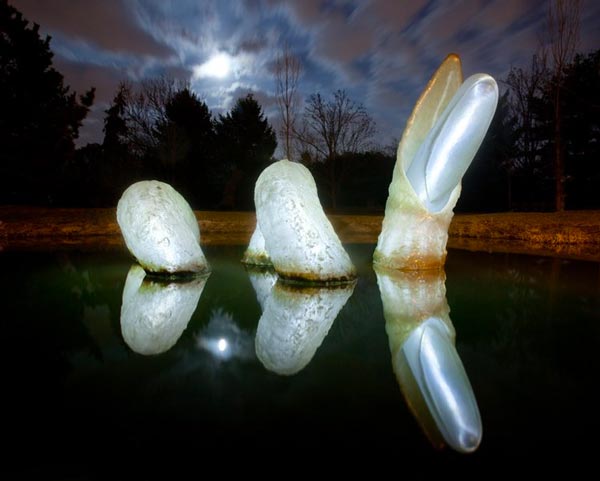
Autin Wright, Carmelita, 2009. Fiberglass, LED light; 120” x 60” x 144” (Photo courtesy of the artist)
“Carmelita” looks like a large undulating mythical sea creature rising out of the water. Wright took his inspiration from a blade of grass. At night, the large form is illuminated. Although he doesn’t especially like to title his work, “Carmelita” is named for his mother.
Wright makes paintings, as well – large textured canvases that are sculptural. “I mix my own medium,” he says, using fiber fill from the casting process as well as glass beads. “It’s more exciting when (the outcome is) unknown. I feel like I’m experimenting in a lab, but as an artist I have the freedom to explore.” Into this textured medium he prints using objects such as a garbage can lid, and he moves the medium around with a broom and a squeegee. He uses the broom handle to create line. “I try to be as spontaneous as possible.” Wright says the work was done in response to the murder of George Floyd.
Another highly textured canvas, titled “Five Boroughs,” is finished in red, yellow, green and black – “Rasta colors,” he says, in a nod to the Rastafarianism, the Jamaican religious and political movement made popular through the reggae music of Bob Marley beginning in the 1970s.
When asked if he listened to reggae while creating “Five Boroughs,” Wright says when working he rarely listens to music. “I like to work in quiet, the only noise I hear is tools.” He uses protective ear plugs, and wears his signature prescription safety goggles even when not sculpting.
Wright is grateful to many of his fellow sculptors who have worked at GFS. Among them: Isaac Witkin, who gave him his first Styrofoam block to carve; Harry Gordon, who gave him his first set of stone carving tools.
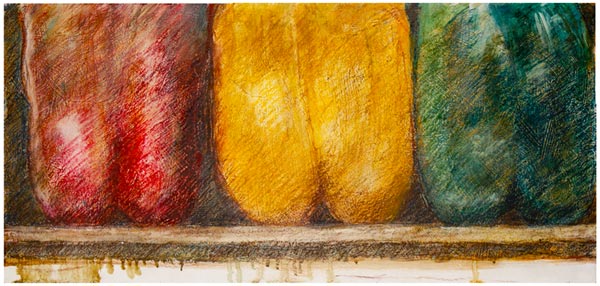
Autin Wright, Nothing But Pepper. Oil Pastel on Masonite, 18" x 10" (Photo courtesy of the artist)
As a technician, Wright is an unsung hero. “Public art is not always done (exclusively) by the artist,” he says. Among the sculptors whose work he helped see to the finish line are Joyce Scott, Kiki Smith, Joel Shapiro, Tom Otterness, Michele Oka Doner and Johnson himself. “The technician doesn’t get the credit, even though I do the finishing” which is what most people see, on the outside. “I’ve worked on a lot of things in the park but I don’t get my name on them.”
Wright would like to see his work in public places in spaces where he’s lived – Hartford, Stamford and Trenton. “It would be good to have the work of an African American artist in Trenton,” he says, thinking possibly at the Trenton Free Public Library or the Trenton Transit Center. “It’s hard for an African American artist” to get gallery representation, he says.
“Making art, and the appreciation of it, is in our DNA,” he says. “Art school reinforces what is already there. Dance, music, poetry – it’s a basic element in all of us.”
About the author: Driven by her love of the arts, and how it can make us better human beings, Ilene Dube has written for JerseyArts, Hyperallergic, WHYY Philadelphia, Sculpture Magazine, Princeton Magazine, U.S. 1, Huffington Post, the Princeton Packet, and many others. She has produced short documentaries on the arts of central New Jersey, as well as segments for State of the Arts, and has curated exhibitions at the Trenton City Museum at Ellarslie and Morven Museum in Princeton, among others. Her own artwork has garnered awards in regional exhibitions and her short stories have appeared in dozens of literary journals. A life-long practitioner of plant-based eating, she can be found stocking up on fresh veggies at the West Windsor Farmers Market.
Content provided by
Discover Jersey Arts, a project of the ArtPride New Jersey Foundation and New Jersey State Council on the Arts.
FEATURED EVENTS
Narrow results by date, categories, or region of New Jersey.
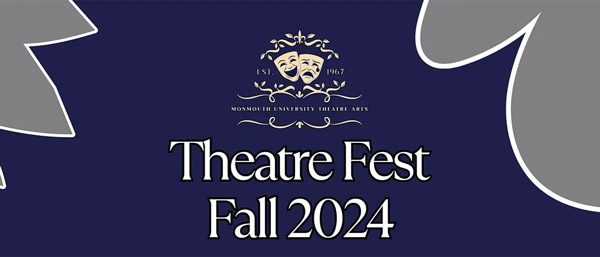
Theatre Fest Fall 2024 – Alpha Psi Omega Presents: To Be or Not to Be: Hamlet, an Abridged Staging
Saturday, November 23, 2024 @ 8:00pm
Monmouth University - Lauren K. Woods Theatre
370 Cedar Avenue, West Long Branch, NJ 07764
category: theatre
View event page for full information

Harry Potter and the Cursed Child (HS Edition)
Saturday, November 23, 2024 @ 7:00pm
Grunin Center
1 College Drive, Toms River, NJ 08754
category: theatre
View event page for full information

Harry Potter and the Cursed Child (HS Edition)
Saturday, November 23, 2024 @ 1:00pm
Grunin Center
1 College Drive, Toms River, NJ 08754
category: theatre
View event page for full information
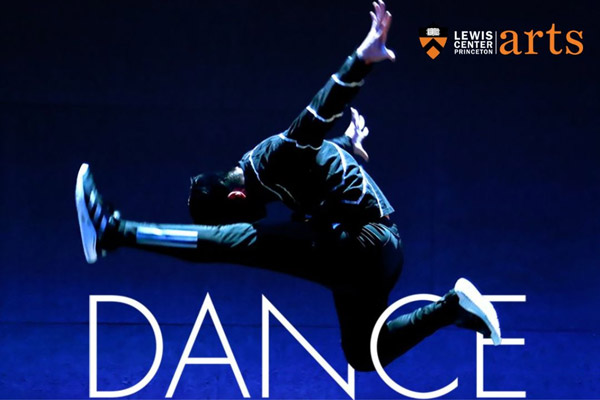
2024 Princeton Dance Festival
Saturday, November 23, 2024 @ 8:00pm
McCarter Theatre Center (Berlind Theatre)
91 University Place, Princeton, NJ 08540
category: dance
View event page for full information

2024 Princeton Dance Festival
Saturday, November 23, 2024 @ 2:00pm
McCarter Theatre Center (Berlind Theatre)
91 University Place, Princeton, NJ 08540
category: dance
View event page for full information
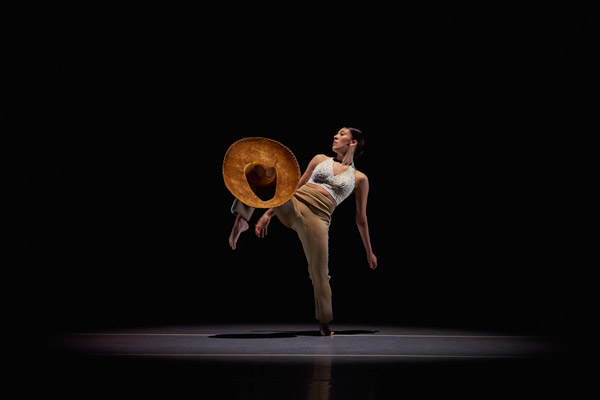
Fall Dance Plus
Saturday, November 23, 2024 @ 7:30pm
New Brunswick Performing Arts Center (NBPAC)
11 Livingston Avenue, New Brunswick, NJ 08901
category: dance
View event page for full information

Axelrod Performing Arts Academy presents Disney's "Alice in Wonderland, Jr."
Saturday, November 23, 2024 @ 7:00pm
Bell Theater
101 Crawfords Corner Road, Holmdel, NJ 07733
category: theatre
View event page for full information

Axelrod Performing Arts Academy presents Disney's "Alice in Wonderland, Jr."
Saturday, November 23, 2024 @ 3:00pm
Bell Theater
101 Crawfords Corner Road, Holmdel, NJ 07733
category: theatre
View event page for full information
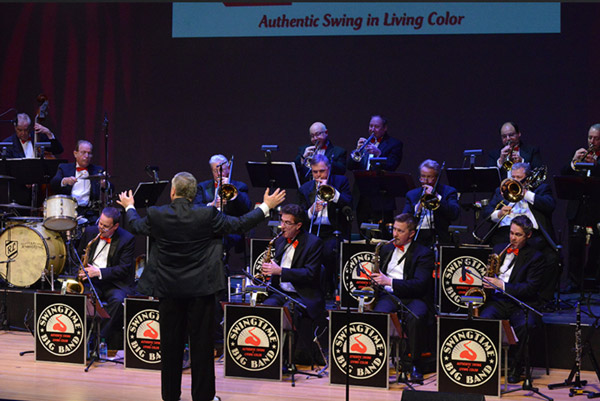
HAPPY FRANKS-GIVING! – Swingtime Big Band Celebrates Sinatra
Saturday, November 23, 2024 @ 8:00pm
Bergen Performing Arts Center (bergenPAC)
30 North Van Brunt Street, Englewood, NJ 07631
category: music
View event page for full information

Elf The Musical
Saturday, November 23, 2024 @ 7:00pm
Count Basie Center for the Arts
99 Monmouth Street, Red Bank, NJ 07701
category: theatre
View event page for full information

Elf The Musical
Saturday, November 23, 2024 @ 1:00pm
Count Basie Center for the Arts
99 Monmouth Street, Red Bank, NJ 07701
category: theatre
View event page for full information
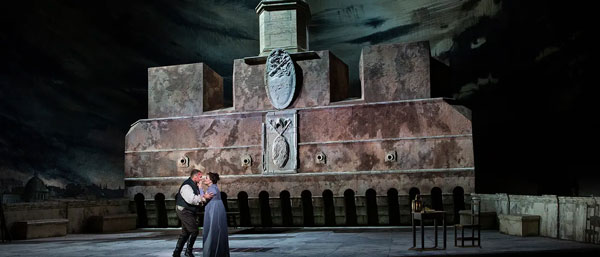
The Metropolitan Opera: Live in HD - Tosca
Saturday, November 23, 2024 @ 1:00pm
Monmouth University - Pollak Theatre
400 Cedar Avenue, West Long Branch, NJ 07764
category: theatre
View event page for full information
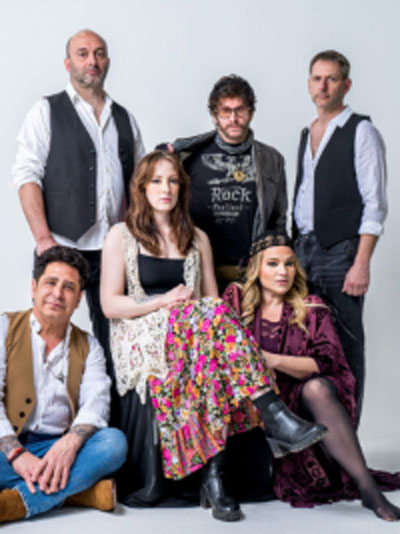
StevieMac: A Fleetwood Mac & Stevie Nicks Experience
Saturday, November 23, 2024 @ 8:00pm
William Paterson University - Shea Center for Performing Arts
300 Pompton Rd, Wayne, NJ 07470
category: music
View event page for full information
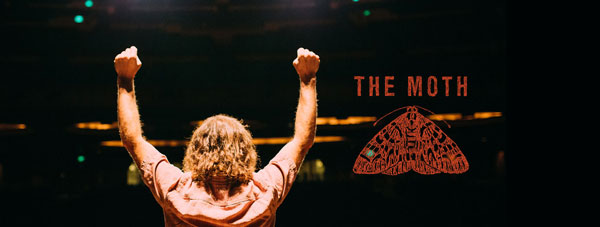
The Moth
Saturday, November 23, 2024 @ 7:30pm
McCarter Theatre Center (Matthews Theater)
91 University Place, Princeton, NJ 08540
category: community
View event page for full information

Dr. Seuss' How The Grinch Stole Christmas! The Musical
Saturday, November 23, 2024 @ 7:30pm
State Theatre New Jersey
15 Livingston Avenue, New Brunswick, NJ 08901
category: theatre
View event page for full information

Dr. Seuss' How The Grinch Stole Christmas! The Musical
Saturday, November 23, 2024 @ 3:00pm
State Theatre New Jersey
15 Livingston Avenue, New Brunswick, NJ 08901
category: theatre
View event page for full information

Dr. Seuss' How The Grinch Stole Christmas! The Musical
Saturday, November 23, 2024 @ 10:30am
State Theatre New Jersey
15 Livingston Avenue, New Brunswick, NJ 08901
category: theatre
View event page for full information

Wooden Ships Band
Saturday, November 23, 2024 @ 7:30pm
Lizzie Rose Music Room
217 E. Main Street, Tuckerton, NJ 08087
category: music
View event page for full information
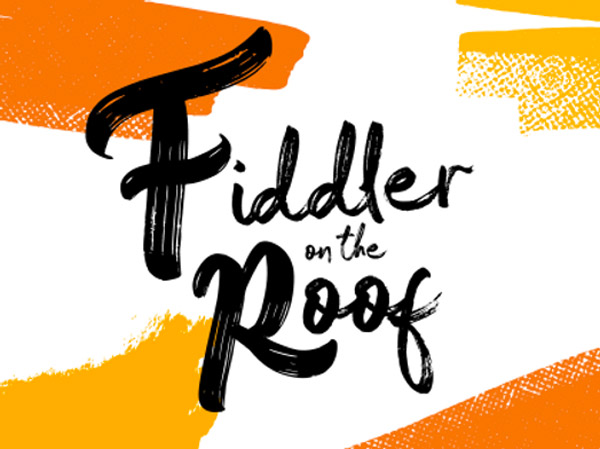
Fiddler On The Roof
Saturday, November 23, 2024 @ 7:30pm
Axelrod Performing Arts Center
100 Grant Avenue, Deal Park, NJ 07723
category: theatre
View event page for full information

Fiddler On The Roof
Saturday, November 23, 2024 @ 1:30pm
Axelrod Performing Arts Center
100 Grant Avenue, Deal Park, NJ 07723
category: theatre
View event page for full information
More events
Event Listings are available for $10 and included with our banner ad packages
EVENT PREVIEWS

American Dream Announces Holiday Plans
(EAST RUTHERFORD, NJ) -- American Dream invites guests to spend the holidays at the one-of-a-kind center, as it transforms into a winter wonderland showcasing the very best in retail, dining and entertainment. Throughout the season, American Dream will be giving away incredible prizes, creating lasting memories and spreading joy throughout the community.
UPCOMING EVENTS
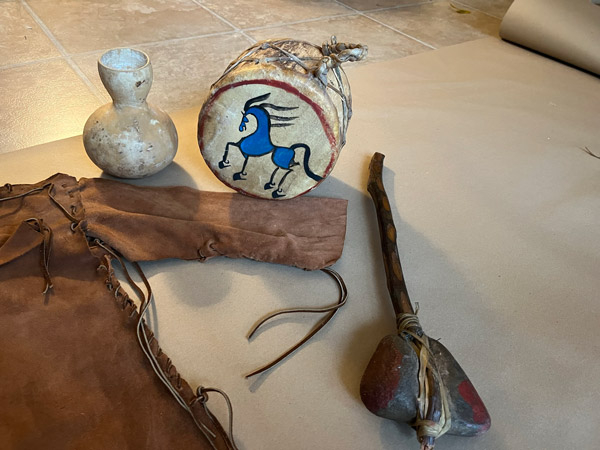
South Jersey's Indigenous Communities Celebrated in New A.C. Arts Garage Exhibit
(ATLANTIC CITY, NJ) -- A new exhibit at the Noyes Arts Garage of Stockton University will celebrate two southern New Jersey tribal communities through the display of historical documents, traditional artifacts and contemporary art. "Still Here: The Nanticoke Lenni-Lenape and Powhatan-Renape Nations of Southern New Jersey" opens October 9 and runs until January 5, 2025.


























